Promotions
Promotions
- Mobile Computing
- Computing
- Displays
- Storage
- Network
- Components
- Communication
- Photo / Video
- Server
- Input
- Cabel & Adapter
- Presentation
- Print & Scan
-
Software
- See all
- Security
- Data management
- Network
- Office applications
- Collaboration software
- Graphic / Multimedia
- Virtualization
- Operating systems
- Software
Mobile Computing
Communication
Photo / Video
Server
Presentation
Software
-
Security
-
Data management
-
Network
-
Office applications
-
Collaboration software
-
Graphic / Multimedia
-
Virtualization
-
Operating systems
-
Software
Promotions
Promotions
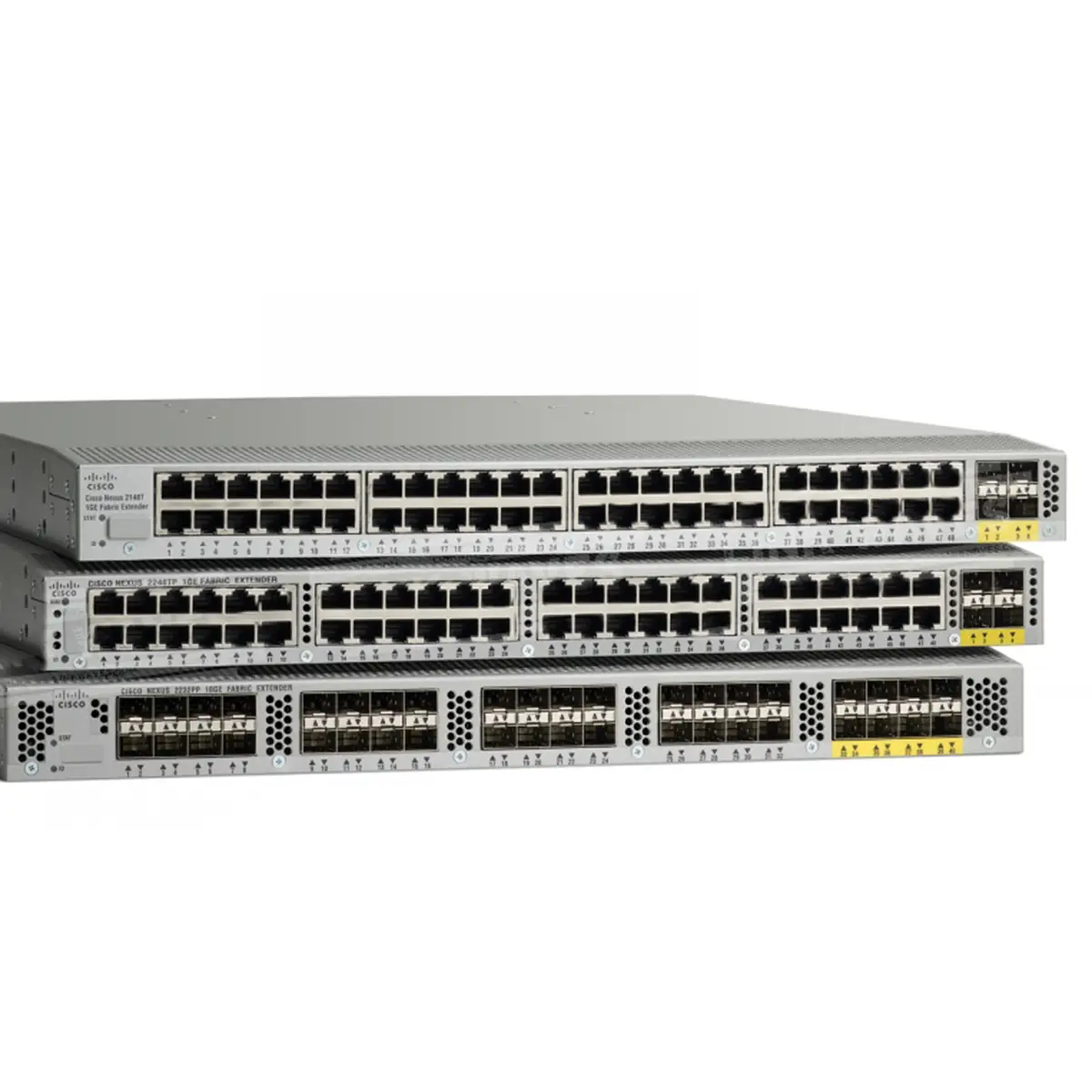
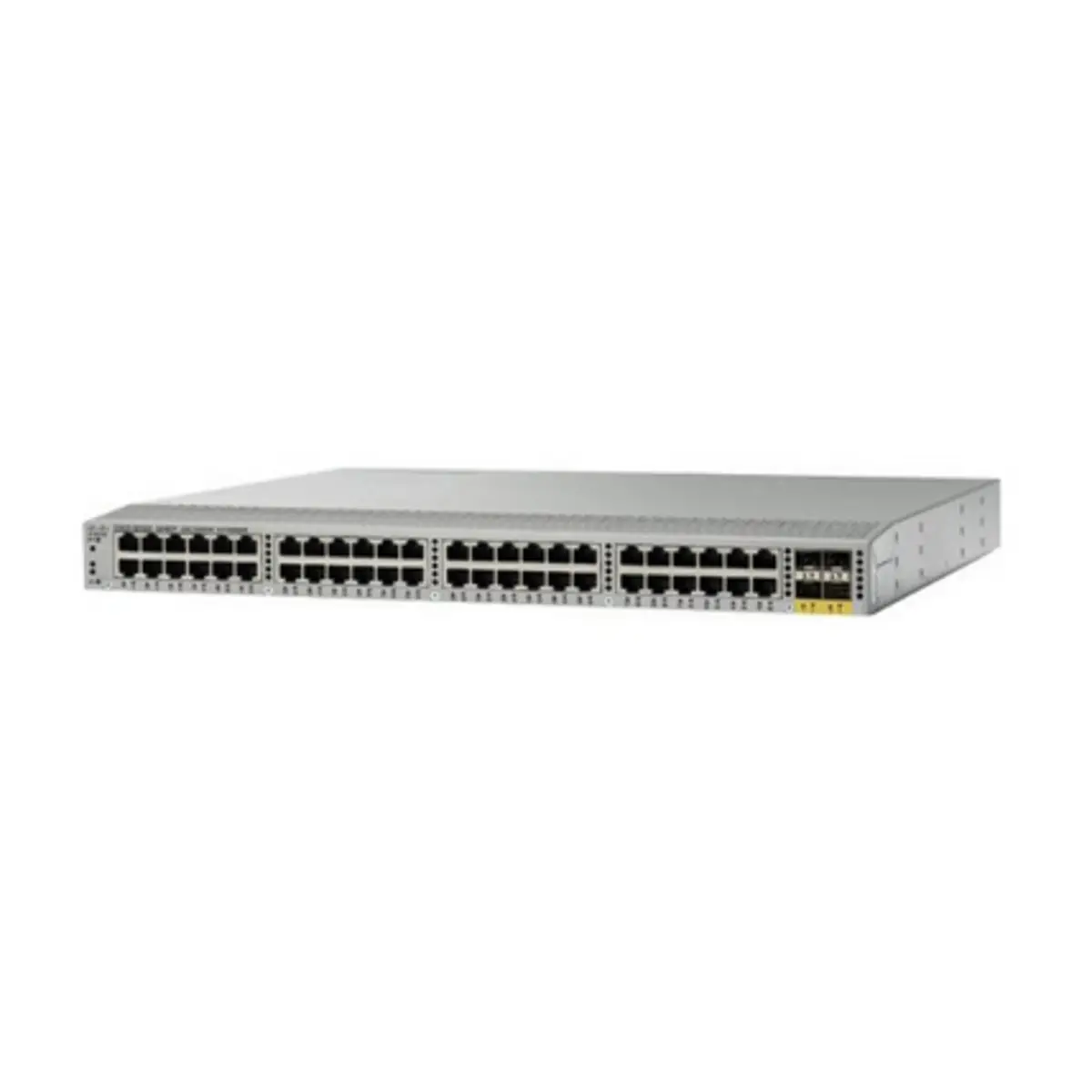
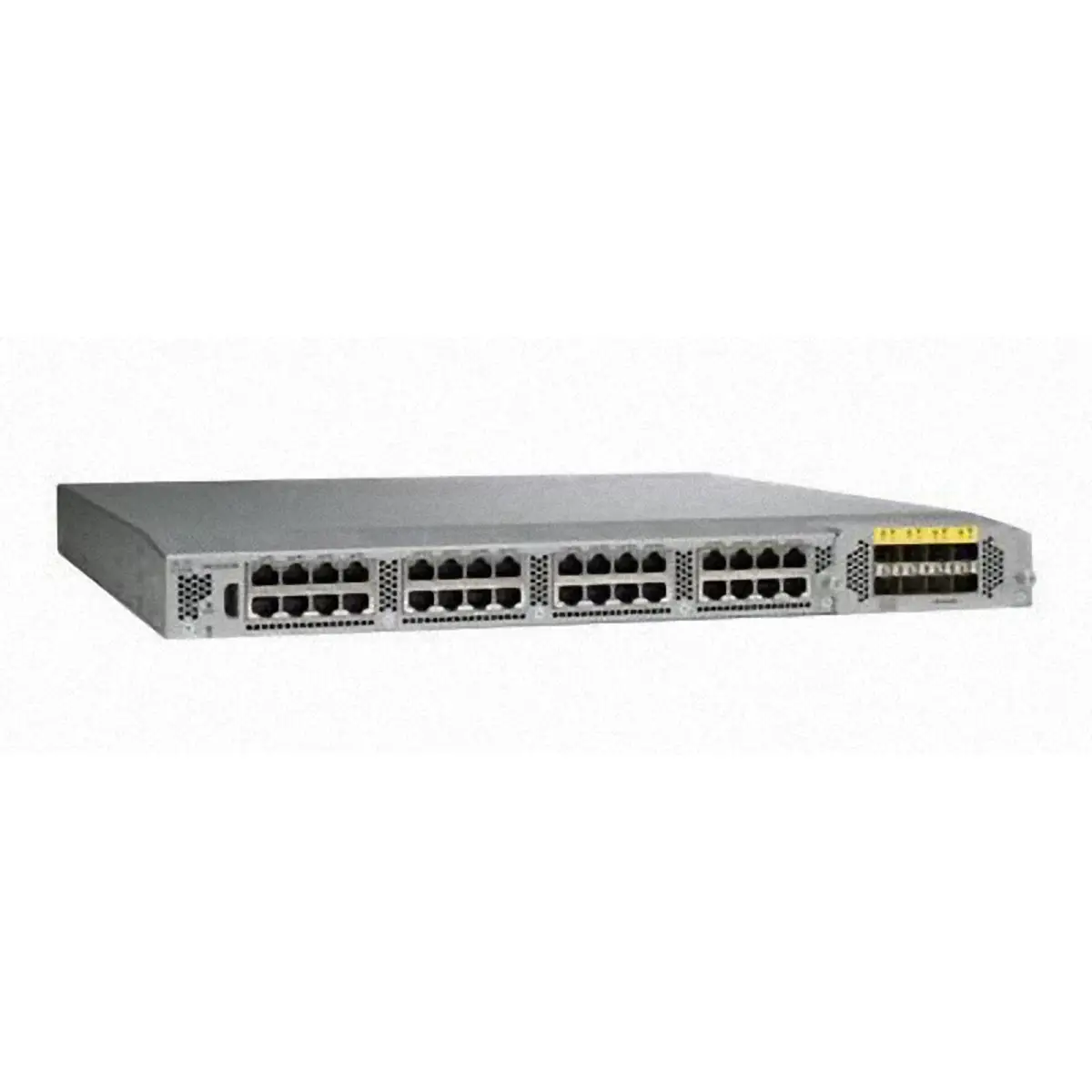
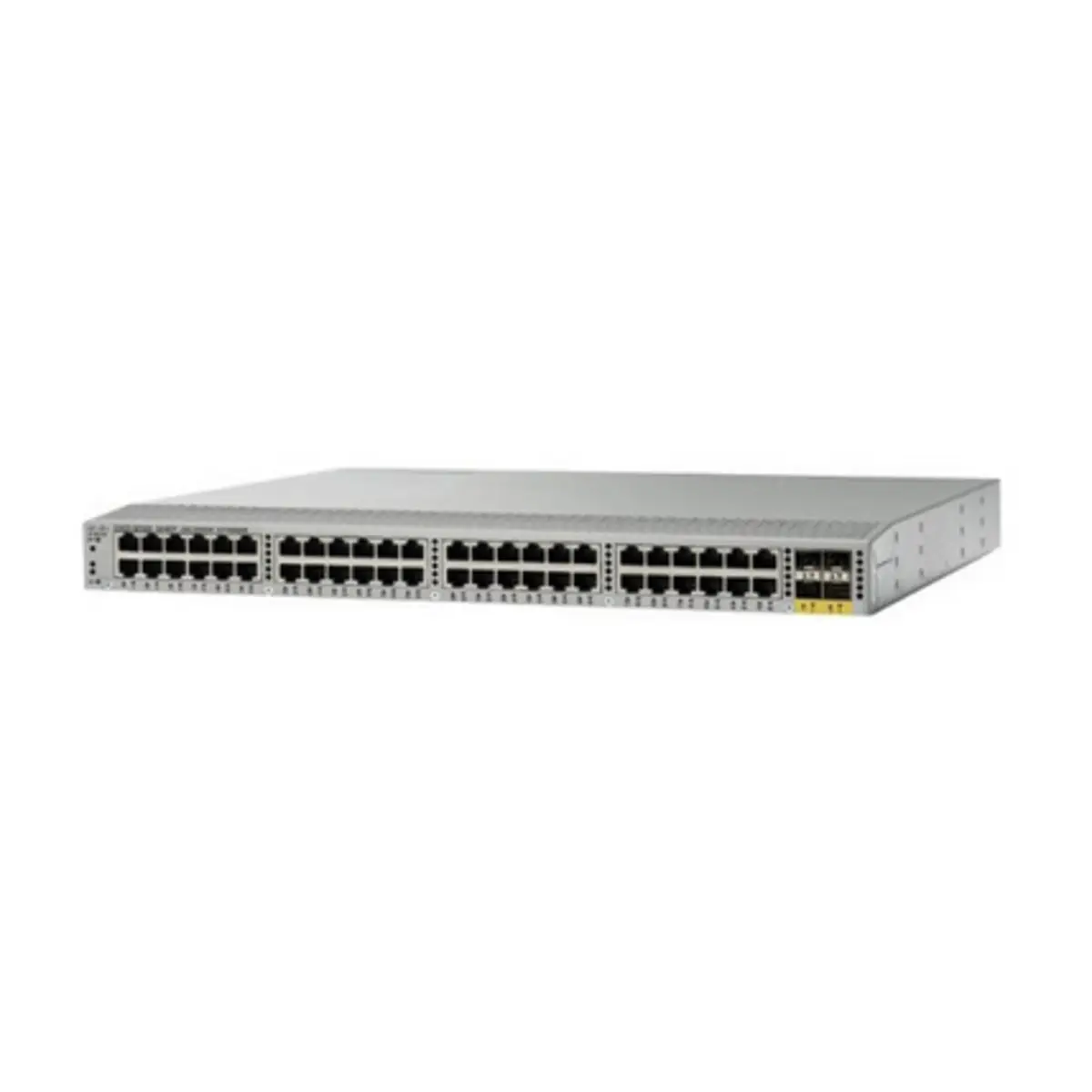
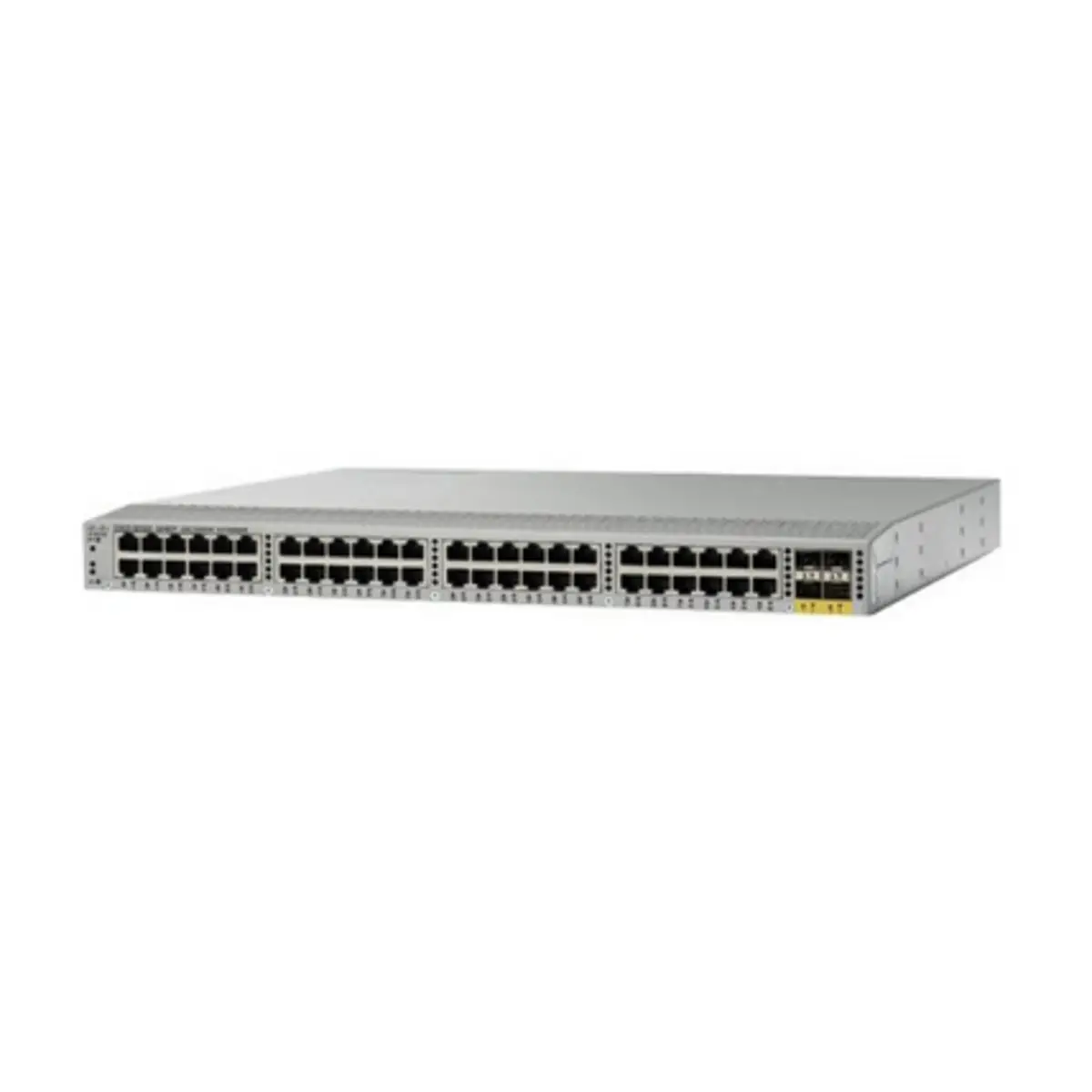





5 Images










Product description
The Cisco Nexus 2000 Series architecture provides the following benefits:
- Architecture flexibility: Common, scalable, and adaptive architecture across data center racks and points of delivery (PoDs)1 that supports various server options, connectivity options, physical topologies and evolving needs.
- Highly scalable server access: Scalable Gigabit and 10 Gigabit Ethernet server access with no reliance on Spanning Tree.
- Simplified operations: One single point of management and policy enforcement using upstream Cisco Nexus switches eases the commissioning and decommissioning of server racks through zero-touch installation and automatic configuration of fabric extenders.
- Increased business benefits: Consolidation, cabling reduction, rack space reduction, reduced power and cooling, investment protection through feature inheritance from the parent switch, and the capability to add functions without the need for a major equipment upgrade of server-attached infrastructure all contribute to reduced operating expenses (OpEx) and capital expenditures (CapEx).
The Cisco Nexus 2000 Series design aligns with that of servers. It offers front-to-back cooling, compatible with data center hot-aisle and cold-aisle designs, all switch ports at the rear of the unit in close proximity to server ports, and all user-serviceable components accessible from the front panel. It also offers back-to-front cooling, with switch ports in front of the chassis, aligned with the cold aisle, for optimized cabling in network racks. The Cisco Nexus 2000 Series is built for nonstop operation, with redundant hot-swappable power supplies and a hot-swappable fan tray with redundant fans. Its compact one-rack-unit (1RU) form factor takes up relatively little space, making it easy to incorporate into rack designs. The fabric extenders are available in several models to provide speed, connectivity, and port-density options.
- Architecture flexibility: Common, scalable, and adaptive architecture across data center racks and points of delivery (PoDs)1 that supports various server options, connectivity options, physical topologies and evolving needs.
- Highly scalable server access: Scalable Gigabit and 10 Gigabit Ethernet server access with no reliance on Spanning Tree.
- Simplified operations: One single point of management and policy enforcement using upstream Cisco Nexus switches eases the commissioning and decommissioning of server racks through zero-touch installation and automatic configuration of fabric extenders.
- Increased business benefits: Consolidation, cabling reduction, rack space reduction, reduced power and cooling, investment protection through feature inheritance from the parent switch, and the capability to add functions without the need for a major equipment upgrade of server-attached infrastructure all contribute to reduced operating expenses (OpEx) and capital expenditures (CapEx).
The Cisco Nexus 2000 Series design aligns with that of servers. It offers front-to-back cooling, compatible with data center hot-aisle and cold-aisle designs, all switch ports at the rear of the unit in close proximity to server ports, and all user-serviceable components accessible from the front panel. It also offers back-to-front cooling, with switch ports in front of the chassis, aligned with the cold aisle, for optimized cabling in network racks. The Cisco Nexus 2000 Series is built for nonstop operation, with redundant hot-swappable power supplies and a hot-swappable fan tray with redundant fans. Its compact one-rack-unit (1RU) form factor takes up relatively little space, making it easy to incorporate into rack designs. The fabric extenders are available in several models to provide speed, connectivity, and port-density options.
Technical specifications
Logistics data
| Harmonized System (HS) code | 85176990 |
Power
| Number of power supply units | 2 |
| AC input voltage | 100 - 240 |
| AC input frequency | 50 - 60 |
| Power consumption (max) | 270 W |
| Output current | 20 A |
Data transmission
| Number of queues | 4 |
| Throughput | 595 Mpps |
Power supply
| Power consumption (typical) | 210 W |
Sonstige Funktionen
| Networking standards | IEEE 802.1Q,IEEE 802.1p,IEEE 802.1x,IEEE 802.3,IEEE 802.3ab,IEEE 802.3ae,IEEE 802.3an,IEEE 802.3u |
| Rack mounting | Y |
| Flow control support | Y |
| Switching capacity | 560 Gbit/s |
Operational conditions
| Operating relative humidity (H-H) | 5 - 95 |
| Storage temperature (T-T) | -20 - 70 |
| Operating temperature (T-T) | 0 - 40 |
| Operating altitude | 0 - 3000 |
| Storage relative humidity (H-H) | 5 - 95 |
Gewicht und Abmessungen
| Weight | 8,300 g |
| Height | 43.7 mm |
| Width | 439.4 mm |
| Depth | 449.6 mm |
Ergonomics
| LED indicators | Y |
Mouse
| Form factor | 1U |
Network
| Full duplex | Y |
| Jumbo frames support | Y |
| VLAN support | Y |
| Jumbo frames | 9,216 |
| Spanning tree protocol | Y |
| 10G support | Y |
Ports & interfaces
| Fiber optic connector | SFP,SFP+ |
| SFP+ module slots quantity | 8 |
| SFP module slots quantity | 32 |
Power over Ethernet (PoE)
| Power over Ethernet (PoE) | N |
Multicast features
| Multicast support | Y |
Security
| Access Control List (ACL) | Y |
| Static port security | Y |
Management features
| Management protocols | SNMP, XML, RMON, SPAN, POST, DCNM |
| Quality of Service (QoS) support | Y |
| Switch type | Managed |
| Switch layer | L2/L3 |
Design
| Product colour | Grey |
| Heat dissipation | 806 BTU/h |
Downloads
107158_document_DE_001
PDF Download
107158_document_EN_001
PDF Download
ID: 107158
Cisco ID: N2K-C2232PF-10GE
Nexus 2232PP Gigabit Ethernet Switch 32ports + 8SFP
Detailed product title
Detailed product title
Cisco Nexus 2232PP Gigabit Ethernet Switch, 32ports + 8SFP, 1 Jahr Herstellergarantie





5 Images
Power over Ethernet (PoE) N
Switch type Managed
Gross:
incl.
vat.
please ask for availability
Added to cart
Gross:
incl.
vat.
please ask for availability
Product description
The Cisco Nexus 2000 Series architecture provides the following benefits:
- Architecture flexibility: Common, scalable, and adaptive architecture across data center racks and points of delivery (PoDs)1 that supports various server options, connectivity options, physical topologies and evolving needs.
- Highly scalable server access: Scalable Gigabit and 10 Gigabit Ethernet server access with no reliance on Spanning Tree.
- Simplified operations: One single point of management and policy enforcement using upstream Cisco Nexus switches eases the commissioning and decommissioning of server racks through zero-touch installation and automatic configuration of fabric extenders.
- Increased business benefits: Consolidation, cabling reduction, rack space reduction, reduced power and cooling, investment protection through feature inheritance from the parent switch, and the capability to add functions without the need for a major equipment upgrade of server-attached infrastructure all contribute to reduced operating expenses (OpEx) and capital expenditures (CapEx).
The Cisco Nexus 2000 Series design aligns with that of servers. It offers front-to-back cooling, compatible with data center hot-aisle and cold-aisle designs, all switch ports at the rear of the unit in close proximity to server ports, and all user-serviceable components accessible from the front panel. It also offers back-to-front cooling, with switch ports in front of the chassis, aligned with the cold aisle, for optimized cabling in network racks. The Cisco Nexus 2000 Series is built for nonstop operation, with redundant hot-swappable power supplies and a hot-swappable fan tray with redundant fans. Its compact one-rack-unit (1RU) form factor takes up relatively little space, making it easy to incorporate into rack designs. The fabric extenders are available in several models to provide speed, connectivity, and port-density options.
- Architecture flexibility: Common, scalable, and adaptive architecture across data center racks and points of delivery (PoDs)1 that supports various server options, connectivity options, physical topologies and evolving needs.
- Highly scalable server access: Scalable Gigabit and 10 Gigabit Ethernet server access with no reliance on Spanning Tree.
- Simplified operations: One single point of management and policy enforcement using upstream Cisco Nexus switches eases the commissioning and decommissioning of server racks through zero-touch installation and automatic configuration of fabric extenders.
- Increased business benefits: Consolidation, cabling reduction, rack space reduction, reduced power and cooling, investment protection through feature inheritance from the parent switch, and the capability to add functions without the need for a major equipment upgrade of server-attached infrastructure all contribute to reduced operating expenses (OpEx) and capital expenditures (CapEx).
The Cisco Nexus 2000 Series design aligns with that of servers. It offers front-to-back cooling, compatible with data center hot-aisle and cold-aisle designs, all switch ports at the rear of the unit in close proximity to server ports, and all user-serviceable components accessible from the front panel. It also offers back-to-front cooling, with switch ports in front of the chassis, aligned with the cold aisle, for optimized cabling in network racks. The Cisco Nexus 2000 Series is built for nonstop operation, with redundant hot-swappable power supplies and a hot-swappable fan tray with redundant fans. Its compact one-rack-unit (1RU) form factor takes up relatively little space, making it easy to incorporate into rack designs. The fabric extenders are available in several models to provide speed, connectivity, and port-density options.
Technical specifications
Logistics data
| Harmonized System (HS) code | 85176990 |
Power
| Number of power supply units | 2 |
| AC input voltage | 100 - 240 |
| AC input frequency | 50 - 60 |
| Power consumption (max) | 270 W |
| Output current | 20 A |
Data transmission
| Number of queues | 4 |
| Throughput | 595 Mpps |
Power supply
| Power consumption (typical) | 210 W |
Sonstige Funktionen
| Networking standards | IEEE 802.1Q,IEEE 802.1p,IEEE 802.1x,IEEE 802.3,IEEE 802.3ab,IEEE 802.3ae,IEEE 802.3an,IEEE 802.3u |
| Rack mounting | Y |
| Flow control support | Y |
| Switching capacity | 560 Gbit/s |
Operational conditions
| Operating relative humidity (H-H) | 5 - 95 |
| Storage temperature (T-T) | -20 - 70 |
| Operating temperature (T-T) | 0 - 40 |
| Operating altitude | 0 - 3000 |
| Storage relative humidity (H-H) | 5 - 95 |
Gewicht und Abmessungen
| Weight | 8,300 g |
| Height | 43.7 mm |
| Width | 439.4 mm |
| Depth | 449.6 mm |
Ergonomics
| LED indicators | Y |
Mouse
| Form factor | 1U |
Network
| Full duplex | Y |
| Jumbo frames support | Y |
| VLAN support | Y |
| Jumbo frames | 9,216 |
| Spanning tree protocol | Y |
| 10G support | Y |
Ports & interfaces
| Fiber optic connector | SFP,SFP+ |
| SFP+ module slots quantity | 8 |
| SFP module slots quantity | 32 |
Power over Ethernet (PoE)
| Power over Ethernet (PoE) | N |
Multicast features
| Multicast support | Y |
Security
| Access Control List (ACL) | Y |
| Static port security | Y |
Management features
| Management protocols | SNMP, XML, RMON, SPAN, POST, DCNM |
| Quality of Service (QoS) support | Y |
| Switch type | Managed |
| Switch layer | L2/L3 |
Design
| Product colour | Grey |
| Heat dissipation | 806 BTU/h |
Downloads
107158_document_DE_001
PDF Download
107158_document_EN_001
PDF Download